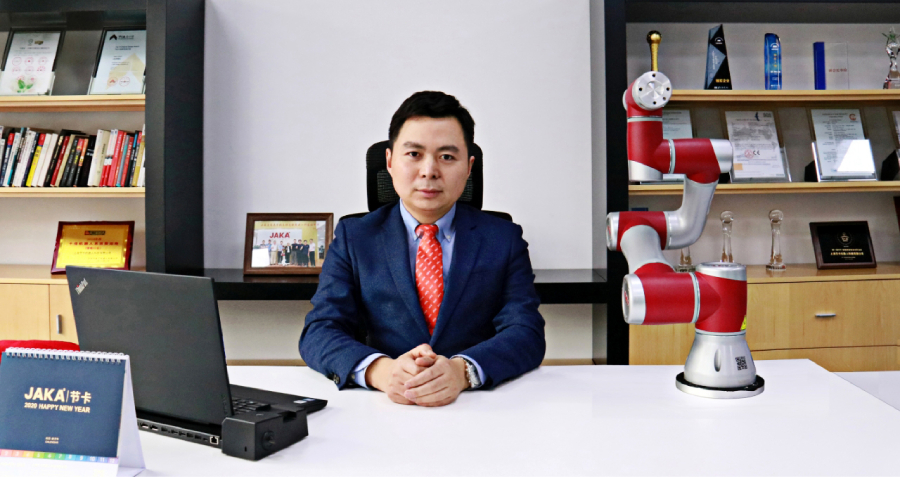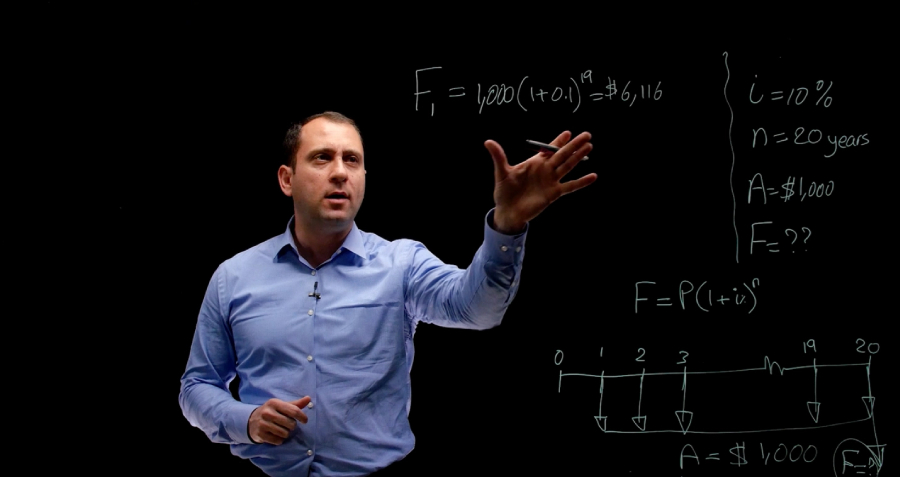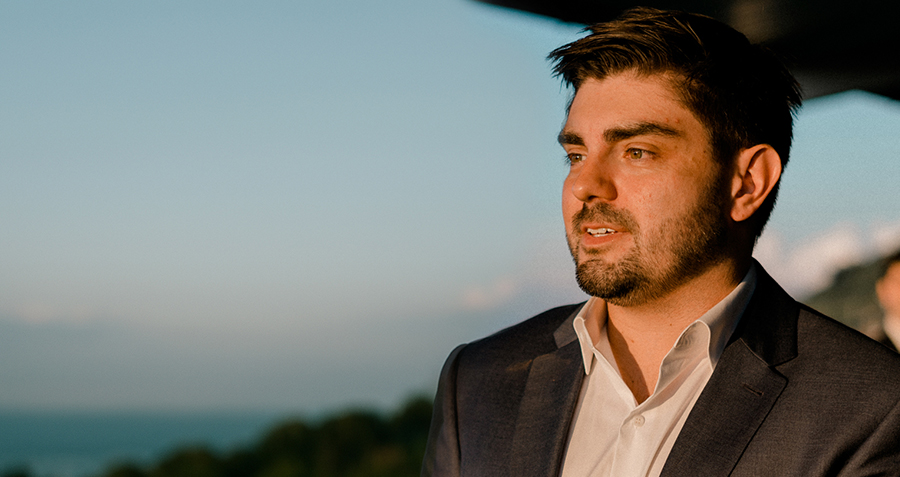In the year 2002, C.K. Prahalad and Stuart Hart published a groundbreaking article in Strategy+Business magazine that introduced to the world the idea of the Bottom of the Pyramid (BOP). The idea, which says that the poor present a vast untapped business opportunity, and if companies serve the poor, they can help eradicate poverty and also make a profit, revolutionized business thinking. Funnily though, before 2002, the idea had no takers: various management journals including Harvard Business Review didn’t publish Prahalad and Hart’s article for nearly four years because it didn’t have enough evidence in terms of multinational companies who had successfully experimented with the idea.
Years later, the idea caught on. Companies like Unilever, Cemex and S.C. Johnson came up with innovative business models to tap the so-called BOP markets in places like India, Brazil and Kenya.
Today more than a decade has gone by, and the idea has come in for some amount of criticism as well. Some of the most vocal critics, such as University of Michigan’s Aneel Karnani, have accused the model for being ‘exploitative’ and ‘imperialistic’, and for viewing the poor only as consumers.
Hart, one of the two proponents of the idea (Prahalad passed away in 2010), still stands by the original concept. However, he believes that the idea of BOP needs to evolve to something he calls BOP 2.0. Companies need to involve local communities in co-creation so that they create more innovative, relevant, sustainable—and lasting—products and solutions. In Hart’s words, “BOP 1.0 typically takes our mental models, our categories and transposes them to the base in a cheap form, affordable form. BOP 2.0 thinking begins with the premise that taking the product categories from the ‘Top of the Pyramid’ and transposing them down probably will fail, that you really need to think about new categories, it’s a way to generate new categories.”
Hart, the S.C. Johnson Chair in Sustainable Global Enterprise and Professor of Management at the Samuel Curtis Johnson Graduate School of Management at Cornell University, was in China recently. In this interview with CKGSB Knowledge’s Neelima Mahajan, Hart, talks about the evolution of the idea of the Bottom of the Pyramid and his work in building sustainable strategies. (To watch the video, scroll down to the end of the page.)
Q. You and C.K. Prahalad came up with the concept of the Bottom of the Pyramid in 1998. When you look back at the idea now, especially since we have the benefit of hindsight and we have seen how companies have implemented it, what do you think of the idea as you originally conceived it? Would you change anything?
A. The fundamental conception hasn’t changed at all. What C.K. Prahalad and I were trying to do in that original piece was really draw attention to the fact that prior to that there might be a financial or enterprise-based approach that could affect low-income people or poor communities. Microfinance preceded it. There certainly have been lots of NGOs that have been working their territory for a long time. We drew attention to the fact that large corporations could actually play a role. Prior to that, it just wasn’t on the radar screen. From the point of view of drawing attention to that potential opportunity, the original piece stands. The concept says that it’s possible for corporations to become engaged with the two-thirds of humanity that they had systematically ignored in the past, and to do so in a way that actually, one, generates innovation, and two, has the potential to actually lift the base, not exploit it. I stand by the original concept.
Q. The concept came in for a lot of criticism as well, particularly in 2006. A research paper by University of Michigan’s Aneel Karnani called the fortune at the Bottom of the Pyramid “a mirage” and accused the concept of propagating an imperialistic notion. To what extent is that a function of the concept itself, or is it something to do with execution?
A. Aneel does raise some valid points. I would be the first to admit, and so would C.K. Prahalad if he were still alive, that you can always find examples of exploiters in any field. It’s not unique to BOP or anything else. But I didn’t find that critique particularly useful. If you look at cases where this hasn’t worked so well, who could dispute that? But if you look at other cases where there is an honest attempt to try to actually create a product or service of some kind, and why it hasn’t worked, I think we can learn some important lessons there and some of Aneel’s work points to some of things that I think are worth considering. But a blanket dismissal doesn’t make any sense.
One of the things we have learned from many of the early attempts to do this by large corporations, and probably some of the original ones, even where they were beginning to experiment with this when Prahalad and I first started writing the piece—like Hindustan Lever in India (the Indian subsidiary of Unilever, now known as Hindustan Unilever), they were reacting to what they perceived as threats coming from local companies, like Nirma in India (Editor’s note: Nirma is an Indian company that manufactures soaps and detergents). They were gearing up a competitive response, and I think there was a certain degree of mimicry. Other companies then began to see what Unilever was doing: the innovation of sachet packaging (Editor’s note: Unilever tapped BOP markets in India by offering low-income consumers products in sachets and single-serve packaging. By reducing the quantity, they were able to lower the costs) and there was a little bit of a pile-on effect.
I’ve thought about it, and my colleagues Erik Simanis, Ted London and others have thought about this as sort of a BOP 1.0 version. One of the things we have learned from the first decade of activity is that simply coming up with a lower cost version or single-serve version, sachet-packaged version of current products, then seeking out distribution into rural areas or into slums with NGO partners, or outsourcing to NGOs, getting production costs down, is structural innovation. It’s important because for a large corporation thinking about this completely different business model, is a significant change. If we are honest with ourselves, and we look at the results of companies that have tried to do that—take existing products, take the cost out of them somehow, and then trying to get extended distribution usually using NGO partners—it just hasn’t worked very well.
Maybe on either count it hasn’t necessarily been pulled in by the communities themselves. In other words, there hasn’t been a huge demand response. For most of the companies, it has not been a particularly profitable venture. In many cases, they’ve moved it over to the philanthropic side of the company. If we’re honest, that’s the reality. If you take the Karnani critique, there is some validity to it.
Some of the conclusions that we began to take away from this is that one, the whole concept of just thinking of this as a target market when you can come in with a ‘rifle-shot product’, doesn’t work, for a couple of reasons. This sort of marketing research-based rifle-shot product works in the upmarket because you have people who are used to being marketed to, and all the infrastructure to support such a strategy is already in place. But that just doesn’t exist when you are thinking about the lower income space, either in rural areas or in slums. It’s necessary to think about a wide and compelling value proposition, and that probably the only way you get that is to actually engage people in the community itself in the process of creating it. This is where a lot of the work on co-creation comes from.
It’s necessary to actually engage people in those communities for a couple of reasons. One, we’re just not smart enough to know what to do in terms of a targeted product that we’re going to go and market there. That model just doesn’t work, and two, it’s necessary to engage the people themselves in this process because that’s the best way to create a wider value proposition.
Q. A lot of what companies such as Unilever in India have been doing in this domain is very BOP 1.0, as you call it. How can companies move to BOP 2.0, a better, sophisticated and more sustainable way of the same concept?
A. New approaches were coming in even in 2003-04 with the Base of the Pyramid Protocol (Editor’s note: This is a business incubation process created by Hart and his colleagues to enable multinational companies to generate new business opportunities at the BOP), with S.C. Johnson, with DuPont. A recent example is of Godrej’s Chotukool refrigerator. Maybe five years ago, Godrej, a large business house in India, saw a tremendous need, in this case lack of refrigeration, especially the rural areas. They set on a path to develop a ‘BOP refrigerator’. They did everything that you would expect would be done under the 1.0 model, and there’s nothing ill-intended about that. It’s just what most existing corporations know how to do. They go out, they collect the marketing research data, they do household expenditure patterns, studies, do some focus groups, get an idea of what the price point needs to be and come up with a product that hits that price point, then repurpose some of their direct sales people along with NGO partners to go and sell it.
So they came up with this little thing that looked like a little metal box, with a little freezer compartment. They were convinced that because they hit the price point, this was going to go out there. They began trying to sell it and it just completely fell flat.
The important thing is that they didn’t stop there. They took a step back and they asked what went wrong. Long story short, they brought in some collaborators and went through a co-creation exercise, where now some of the people from the company themselves joined the team and lived in the community for some time. They began to gather potential partners, mostly women, as opposed to just collecting data about household expenditures. Now they were in the community, becoming immersed, attracting potential partners interested in becoming entrepreneurial partners in the venture, as opposed to just consumers. They ultimately came up with this artifact called the Chotukool, which means ‘little cool’ in Hindi. It’s not a freezer, (just) a different category.
BOP 1.0 typically takes our mental models, our categories and transposes them to the base in a cheap form, affordable form. BOP 2.0 thinking begins with the premise that taking the product categories from the ‘Top of the Pyramid’ and transposing them down probably will fail, that you really need to think about new categories, it’s a way to generate new categories. So the Chotukool is a new category, it’s not a refrigerator, and it is functional, because it doubles as a work surface. It actually was a leapfrog innovation too, because it doesn’t use a traditional compressor as the cooling agent. It’s a leapfrog technology all in the lid. It can use any power source, including solar or biofuel or anything else. It can be moved around inside the home. The women in the community themselves were involved in the development, and also are agents both for selling and servicing, so it’s income generating in the community. BOP 2.0 has a wider value proposition, it’s just not going in with a single product that you are trying to sell, it has engaged the entire community in this enterprise that you had a hand in designing it, and they are part of the business model as well.
Q. Moving on to your work in sustainability, most companies are caught in a very one-dimensional view of sustainability: one small initiative here, one small initiative there, and they think they have done their bit. How would you really rethink the idea of sustainability so that it includes a lot more than what companies are used to thinking about?
A. I’ve tried to think about it now for some time, not as a set of one-off side programs in corporate social responsibility (CSR) and reporting, but how do you embed this in a fundamental way in the corporate strategy of the company. Has the world come around to that? I’d say a lot more now than 20 years ago. But I’d say that the dominant way of approaching this, somewhat unsurprisingly to me, still is for existing corporations, number one, eco-efficiency which I now think has really caught on in a very substantial way. It makes sense because it simply makes the current business model more efficient, so it reduces costs and reduces risk. So it shouldn’t surprise us that the eco-efficiency, pollution prevention—what I’ve called ‘greening strategies’ —have taken root first. But on the social side, what’s taken mostly is what we would call CSR activities, which have tended to be corporate volunteerism, philanthropy, starting up, kind of doing good work and allowing people in the company to participate in them. They don’t always have much to do with the core strategy of the company.
It’s not a bad thing but it’s not going to change the world. It’s not possible to donate your way out of the challenges that we face, so eco-efficiency and CSR, I think, have now taken root in a pretty substantial way. That’s great that that has happened on some level. Eco-efficiency is more embedded in business performance because it’s all about reducing risk and costs and operations, CSR has been more separate from business strategy, but it’s seen as a reputation play: building up the company reputation, and maybe attract employees if they notice the good work that’s going on.
But what I would see as really the most important element of all this is what I call ‘beyond greening’. It has probably gotten the least traction so far, and again I’m not surprised by that. In fact, from the beginning I saw this as a long-term proposition: that if ‘greening’ is about the continuous improvement of current products and processes, emission reduction, pollution prevention, waste reduction, product stewardship, engaging stakeholders around current products, maybe thinking about changing the supply chain, think about how you could design the product differently to be able to take it back. That’s a little more radical than just pollution prevention. But those are ‘greening’ strategies.
‘Beyond greening’ is about leapfrogging to next-generation inherently clean technology, which would make what you are currently doing, in many cases, obsolete, and it’s about getting to those who have been less underserved, or actively exploited, and communities that fit that description as well, which we call the base of the pyramid. So ‘beyond greening’ is about tomorrow’s technologies and tomorrow’s potential markets that have to be created. ‘Greening’ is about today’s products and processes.
We shouldn’t be at all surprised that ‘greening’ is what’s happened first. It builds off current routines and current capabilities. ‘Beyond greening’ requires the development of new skills and capabilities. It’s potentially disruptive for some of the current core businesses within a large established corporation. For entrepreneurs less so: they can start with pure plays that are ‘beyond greening’ and go right after those incumbents. But for incumbents it’s something that looks potentially disruptive on the surface, but clearly would require new capabilities and skills in order to carry it off.
Q. One of your key contributions is the idea of the Sustainable Value Framework which links the challenges of global sustainability to the creation of shareholder value by the firm. In theory, this makes complete sense as it will make it easier to solve some of the tough problems we are facing in the world today. How can companies make the Sustainable Value Framework a business imperative, especially when they are trying to achieve tomorrow’s goals even while they are operating within today’s business model? All of that put together is a tough act.
A. It’s a matter of being a realist about what the current conditions are, and then where things are likely to go over time. The last 20 years have been all about economic globalization and the emergence of China and India, especially the rising middle classes. Most existing corporations from the West focused all their attention on catering to those rising middle classes. That’s really what emerging market strategy has been. Frankly, that’s what most Chinese and Indian companies have done too: they focused on either the elites, which they always did, or for growth the rapidly rising middle class. There were a large number of people who joined that category over the last 20 years. The problem is that strategy of catering to that rising middle class can’t last. We’ve now reached a point where the whole approach–taking what we are already doing at the top and then moving it incrementally down market—the environmental implication of that becomes so onerous and difficult to imagine that you’re confronting meltdown. It’s not possible to take the resources and waste-intensive model that existed previously and multiply it by three or five, let alone taking it all the way to the base. The environmental implications are just unthinkable. So environmentally I think we’re reaching a point where that strategy just won’t go any further.
But we’re also reaching a point where that strategy now is reaching its limits purely from an economic and financial point of view. You can only strip so much cost out of a high-cost model as you step it down, that eventually you start to run into the limits. As you try to move further down the income pyramid, people simply can’t afford this stuff, or doesn’t really fit what they need. The first attempt was BOP 1.0, you just strip more cost out of it, put it in a sachet package. It hasn’t worked so well. Environmentally and from a purely financial affordability point of view, it does not (work well).
As we look forward to the next 20 years, if companies are going to grow and they are driven by growth, they are going to have to figure out how to reach out to the rest of the world, the other 4 or 5 billion people at the base of the income pyramid. A lot of people have said, ‘You’re interested in the base of the pyramid, or BOP, so what are you talking about? Is that the bottom billion, less than a dollar a day?’ Obviously the 4 or 5 billion people that Prahalad and I talked about, people who earn less than $3-4 a day, that’s 4-5 billion people today. They’re not all the same, this is not just some monolithic demographic. And we’re not focusing just on the people that are under a dollar a day, if you did that that’s a billion or so, we’re talking about 4 or 5 billion. Focusing exclusively on the bottom billion as a business strategy is pretty tough. That’s more the domain of pure aid, but you can think about strategies that cut across all of this, because communities are made of people that cut across this income range. That’s increasingly where we’re headed. How do we begin to conceptualize, through this co-creative process, new products and services embedded in inclusive business models that lift the base and open up and create this entirely new market that didn’t exist before, and at the same time improve people’s lives, generate income—that’s how you lift the base. That’s what the next 20 years is going to be all about, and that is the ‘beyond greening’ agenda. We’ve arrived at the point where there’s actually not a lot of choice. If you are a large incumbent global firm, there’s not a lot of other territory for you to expand into.
Q. Is that thinking starting to trickle into boardrooms today?
A. I think it is. Compared to even 10 years ago, let alone 20 years ago, the kind of conversations that are going on in the C-suite and boardroom would boggle your mind. This is on the radar screen, and people are beginning to engage this challenge in a very thoughtful way. It’s only a matter of time. As long as there is easier low-hanging fruit to pick, it’s understandable why companies would go after that. But I think now we’re arriving at a time when there just isn’t a lot of easy, low-hanging fruit left, so if you’re serious about just looking at it purely in a mercenary, corporate growth and profitability way, if you are serious about continuing to grow the company for the future, you have to look at this or else you don’t have a future.
Q. One of the things you keep talking about is this whole idea of creative destruction in this context. Where do you think the big push for creative destruction will come from?
A. These days there are new trendy terms, like trickle-up innovation and reverse innovation and so forth. But it’s old wine in new bottles. If you look back, for example, at a piece Clayton Christensen and I did 10 years ago called ‘The Great Leap: Driving Innovation for the Base of the Pyramid’, this has been the argument, that the way that creative destruction will happen is that there aren’t going to be a lot of incumbent firms that decide they’re going to just fundamentally change their game and go after each other in the up-market. That’s not going to happen. It will come through these kinds of market probes and experiments that I’ve been describing that are ‘beyond greening’, starting in the base of the pyramid. In fact there’s a chart in the paper that Christensen and I did 10 years ago, that shows the global triangle. And then if you take the great leap, and you begin to think about creating (value) in the underserved space, you have to create new markets that didn’t exist before. That’s all new growth. That’s actually ‘creative creation’, not ‘creative destruction’.
There is a period that’s all about new growth even if you’re an incumbent: you enter into this new space, as you get traction and begin to grow new businesses, create new business models and new products and services. That doesn’t destroy anything. So you can actually be thoughtful about this as an incumbent, and as you do that, eventually some of that will have the potential to trickle up. There’s the potential for it to move up-market, that’s the reverse innovation engine that Vijay Govindarajan talks about. Some of those things will move back up and will become exceedingly competitive at the ‘Top of the Pyramid’, and in some cases those may be leapfrogged from an environmental footprint point of view, they may have orders of magnitude less impact, but also be highly functional and affordable at the same time. That’s when creative destruction occurs. If you are an incumbent, you would be smart to figure out how to do that to yourself, and phase it, time it. You actually have some control over the timing by which that happens, versus ignoring it and allowing the entrepreneurial process to do it. So I very much see that as the dynamic, that’s the way it’s going to happen, it will be the ‘great leap’ to the base and then trickle up.
Q. You’ve often talked about China and India and how these two countries with their very unique environmental and social problems, might end up leading the transformation as far as green leap technologies are concerned.
A. There is a unique industry here in China, which is the glass vacuum tube solar hot water industry. It has been around a while, but probably the technology innovator was Tsinghua Solar, a company spun out of Tsinghua University. Huaming Solar is also very active in the space. These are well known companies here but for the rest of the world it’s not well known at all. Most people don’t know that there is a glass vacuum tube solar hot water industry in China. It is less than half the cost of traditional flat panel solar hot water, and that works exceedingly well, it has no rare metals or anti-freeze. Flat panel solar has all the problems that go along with the materials and the solar panels, and anti-freeze in order to drive the system and so forth. The glass vacuum tube solars are basically just glass, highly engineered glass with a medium to collect the sun’s energy, and then it’s stuck into a highly engineered water tank. If we think about entrepreneurs that are focused on ‘green products’, the mental model is that green products are for rich people. We’re still stuck with that as a legacy of the 1990s: that anything to do with the environment is for rich people. The legacy of the 80s and the 90s was that it always costs more. We know that that’s false.
The premise behind the green leap is that many of the emerging distributed next generation clean technologies actually have the potential to work best first in the underserved space. So in this case, Tsinghua Solar started with the idea that this is a green product, so we got to sell it to the rich. They began by trying to market it to the wealthy in Beijing and Shanghai, and it didn’t work. Realizing now they had all this investment in this technology, they went out to the towns and found people who only had very sporadic access to hot water. There was huge pent-up need to have access to hot water on a dependable basis. Oddly enough, they end up kind of crafting the initial ‘commercializable’ version of the product and the business model around that population. It’s really more of a BOP strategy. It’s a green leap. It didn’t work at the top, so you take it out, and now they’ve wrapped this more inclusive business model, focusing on the underserved, with a leapfrogged green technology. That’s the name of the game. And that’s really where it’s taken root. You go out to the countryside, these things are everywhere, and they’re growing 70 to 80% a year.
It’s only a matter of time before they go international, they’ll go to North Africa, they’ll go to India, and then eventually this thing gets so tested, so bulletproof, that it’ll trickle up. As oil prices continue to rise, as gas prices eventually rise, this technology might start to look really attractive in Europe or the US. This is the reverse innovation engine piece to this.
That’s just one example of many to come, that are going to originate in China, India and Africa and then spread from there. The best and the most visible example of this phenomenon of course over the last decade has been mobile telephony. Right now we got four billion plus people that have access to cellphones and mobile telephony. There’ll be universal access within another five years, and internet access increasing at the same kind of exponential rate. All of this comes from the rate at which these technologies are improving. Peter Diamandis has this new book out called Abundance on the idea of exponential technologies. We shouldn’t take those lightly—that’s enormously important. So there’s this exponential technology aspect to what I’m talking about, as they get better and better by Moore’s Law, they become more and more affordable and it’s actually the underserved space that’s in the best position to bring them to commercial reality first, for a whole range of reasons. You don’t have a fully built up infrastructure, you don’t have to change people’s minds like you have to do at the top. The biggest problem is people unlearning how they currently do things, you don’t have that problem at the BOP.
ABOUT STUART HART:
Stuart L. Hart is the S.C. Johnson Chair in Sustainable Global Enterprise and Professor of Management at the Samuel Curtis Johnson Graduate School of Management at Cornell University, where he founded the Center for Sustainable Global Enterprise. He also serves as distinguished fellow at the William Davidson Institute (University of Michigan) and president of Enterprise for a Sustainable World. He, along with well-known management guru C.K. Prahalad, is considered one of the founding fathers of the Bottom of the Pyramid theory. In 2002 he co-authored the first seminal article on the Bottom of the Pyramid along with Prahalad. Hart is also the author of books like Capitalism at the Crossroads and Next Generation Business Strategies for the Base of the Pyramid (with Ted London).




















